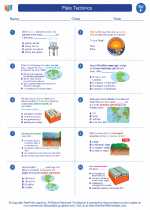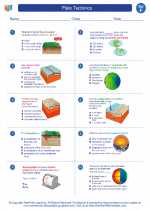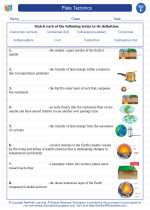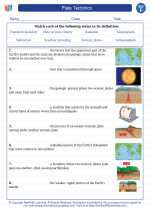Silicate Minerals
Silicate minerals are the most common group of minerals on Earth, making up over 90% of the Earth's crust. They are composed of silicon and oxygen atoms, combined with various metals such as aluminum, iron, magnesium, and others. Silicate minerals are classified based on their chemical structure and the way the silicon and oxygen atoms are arranged.
Types of Silicate Minerals
There are several types of silicate minerals, including:
- Independent Tetrahedra: These minerals have isolated silicon-oxygen tetrahedra, such as olivine.
- Single Chain Silicates: Minerals in this group have silicon-oxygen tetrahedra linked in a single chain, like pyroxenes.
- Double Chain Silicates: These minerals have silicon-oxygen tetrahedra linked in double chains, such as amphiboles.
- Sheet Silicates: Minerals in this group have silicon-oxygen tetrahedra arranged in sheets, like micas.
- Framework Silicates: These minerals have a three-dimensional framework of silicon-oxygen tetrahedra, such as quartz and feldspar.
Physical Properties
Silicate minerals can exhibit a wide range of physical properties, including color, hardness, cleavage, and luster. These properties can be used to identify and classify silicate minerals.
Formation and Uses
Silicate minerals form through a variety of processes, including crystallization from magma, precipitation from hydrothermal fluids, and chemical weathering of pre-existing minerals. They have various uses in industry, construction, jewelry, and technology.
Study Tips
When studying silicate minerals, it's important to familiarize yourself with their chemical compositions, crystal structures, and physical properties. Use diagrams and models to understand the arrangement of silicon-oxygen tetrahedra in different types of silicate minerals. Practice identifying silicate minerals based on their characteristics and learn about their practical applications in everyday life.
.◂Science Worksheets and Study Guides Sixth Grade. Plate Tectonics

 Worksheet/Answer key
Worksheet/Answer key
 Worksheet/Answer key
Worksheet/Answer key
 Vocabulary/Answer key
Vocabulary/Answer key
 Vocabulary/Answer key
Vocabulary/Answer key
 Vocabulary/Answer key
Vocabulary/Answer key
 Vocabulary/Answer key
Vocabulary/Answer key
